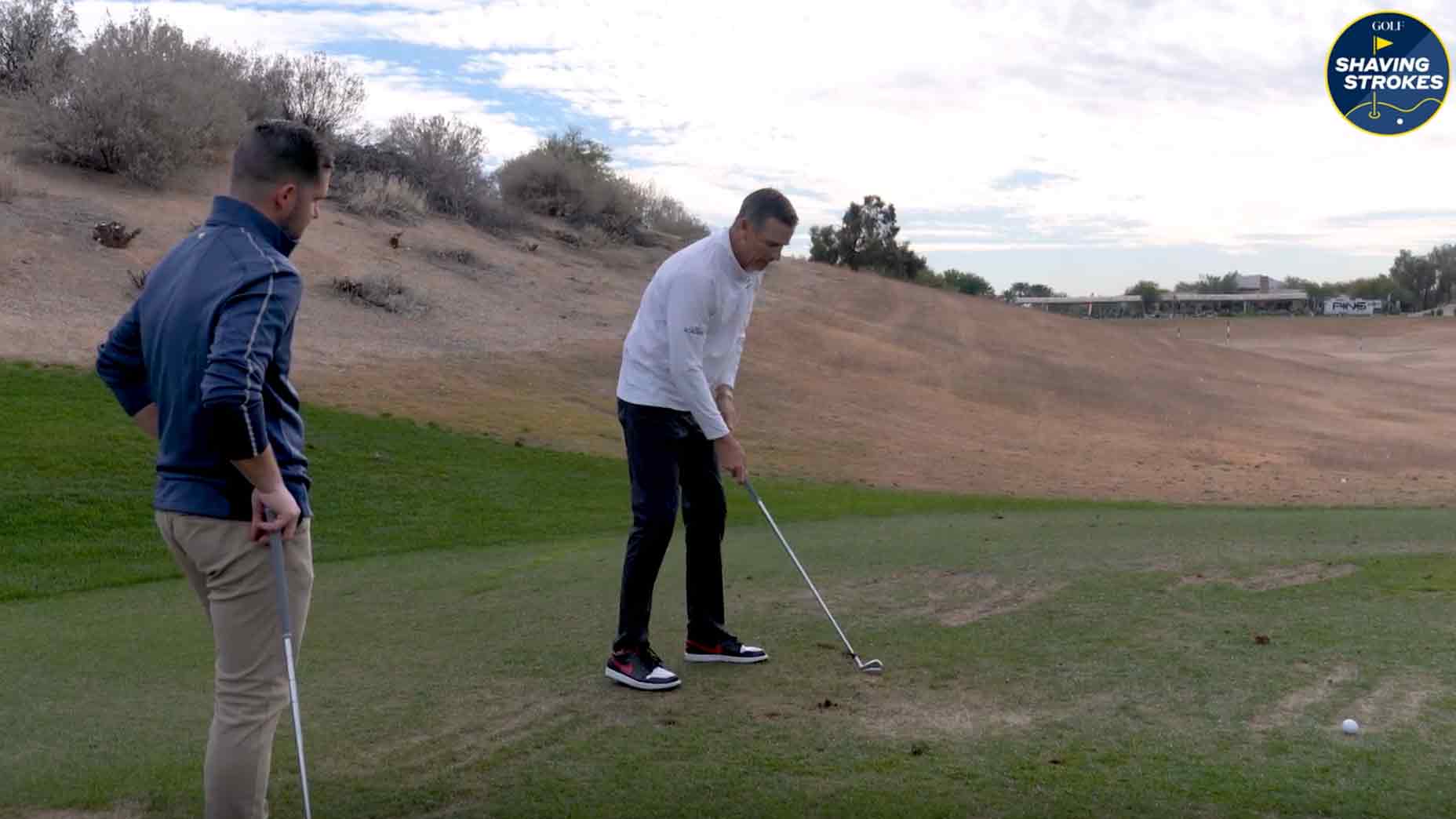Set to open in 2025, Jack’s Bay in the Bahamas has courses by Nicklaus Design and Tiger Woods, and a new collection of luxury homes. The post Jack’s Bay unveils new residences, alongside courses by Nicklaus Design and Tiger Woods appeared first on Golf. Set to open in 2025, Jack’s Bay in the Bahamas has…
This golfer wanted just to break 100. Instead, she shaved off nearly 20 strokes
Breaking 100 in golf is a great goal for beginners, and top teacher Ed Oldham shares how he helped a student achieve the accomplishment.
The post This golfer wanted just to break 100. Instead, she shaved off nearly 20 strokes appeared first on Golf.
Breaking 100 in golf is a great goal for beginners, and top teacher Ed Oldham shares how he helped a student achieve the accomplishment.
The post This golfer wanted just to break 100. Instead, she shaved off nearly 20 strokes appeared first on Golf.
A common goal for golf beginners is to simply break 100, which is a way to gauge just how much progress they’ve made since first picking up a set of clubs.
Like all scoring goals, breaking 100 takes effort to achieve, as well as lots of patience. Players often go from learning the basic fundamentals like gripping the club and improving their setup or posture, to lifting the ball in the air and making solid contact more consistently. Once they get comfortable with those aspects of the game, they can then look toward scoring lower.
Unfortunately, many amateurs get discouraged if they don’t break 100 early on in their golf careers. But one player, a 33-handicap named Nikki, wanted to make sure she achieved her mission — so she worked with GOLF Top 100 Teacher Ed Oldham to really commit to doing so.
Nikki didn’t just accomplish her goal, but she did so with flying colors, going from a consistent 105 shooter to having a career round of 87 earlier this year after working with Oldham.
Naturally, I was intrigued, so I reached out to Oldham to get his secrets on what he did to help Nikki shave nearly 20 strokes off her regular score. You can check out his advice below, which may help you see major gains as well.
How a 33-handicap went from breaking 100 to shaving nearly 20 strokes
Oldham told me that Nikki initially contacted him in May, hoping that consistent work with a top teacher could help her break 100 for the first time.
“Nikki was a 33-handicap with an average score of 105,” Oldham told me. “Her initial goal was to break 100 for the first time and, ultimately, regularly shoot in the low 90s.”
First, Oldham referenced some information from Mark Broadie’s book “Every Shot Counts,” which helped Nikki understand how many strokes she was costing herself during each round simply from bad shots.
“In Broadie’s book, awful shots are basically a shot that doesn’t improve your situation much — like a topped shot that goes into the water where you have to drop at the same place, or a shot that goes out of bounds. A golfer who regularly shoots 100 has, per Broadie, 10 awful shots per round,” he said.
“When we started, Nikki’s bad shots were chunks, topped shots and slices. Her grip was weak, the clubface stayed open, and she had some typical compensations for the open clubface that included a poor weight transfer and early release. She had a lot of awful shots.”
Oldham then explained how he helped Nikki correct these flaws, which, in turn, led to less lost strokes each round.
“As a coach, my top priorities are having a good clubface at the top of the backswing and impact, as well as making solid contact,” he explained. “We made Nikki’s grip stronger and moved it more in the fingers of her left hand. This helped to get the clubface in a better position.
“We then spent the majority of the time during the first lesson on improving her contact. In fact, we spent the first five lessons working on various ways to improve her clubface control and contact.”
So what’s it take to make solid contact more consistently? Oldham said it’s all about being ball-first at impact.
“For solid contact, you want to hit the ball first and then the ground, making sure that the divot is on the target side of the golf ball,” he said. “The majority the first lesson [with Nikki] was spent working on hitting the ground in the correct place.”
He then described an easy drill to try to practice this.
“We did a Goldilocks drill, where she hit the ground too far back, hit the ground too far forward, and then hit the ground in the correct place — since the brain learns from the variation,” Oldham shared. “We also did a tee drill, where I teed up a ball similar to how high it would be on a par-3 hole, then I put another tee in the ground two inches on the target side of the ground. Nikki’s task was to hit the ball and then the ground.”
The tee drill helped Nikki get instant feedback, showing them exactly what they did right or wrong.
After seeing Nikki start to make better contact, Oldham then said they worked on controlling the clubface, leading to better results.
“To improve the skill of clubface control, we did a drill called variable clubface practice,” Oldham shared. “With variable clubface practice, I ask the student to change the face every swing: one to the left, one to the right, then one down the middle. This is a great drill for players of all ability, with better players having smaller variations.”
Following just five lessons together, Nikki didn’t just breaking 100 for the first time — she shattered the goal by breaking 90.
“By working on the clubface and improving her contact, Nikki was able to accomplish her goal of breaking 100,” Oldham told me. “She shot a 96 and a 93 within three weeks of our first lesson, and she even recently shot an 87, while regularly scoring in the low 90s now.”
Voice Caddie VC4 Golf GPS
$129.99
Equipped with high capacity battery that can last up to 54 holes. When the battery gets low, it calculates remaining holes and automatically goes into Power-Saving mode. Quick charge is available via USB-C charger which comes with the purchase.
View Product
The post This golfer wanted just to break 100. Instead, she shaved off nearly 20 strokes appeared first on Golf.




